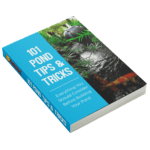Wildlife gardens have gained a lot of popularity as general sentiments have shifted towards conservationism, endangered bird and insect species and the recreation of ecosystems to help their survival.
Wildlife gardens can be immensely satisfying, and they are projects that the whole family can get involved in with weekend projects for the kids and longer term strategies that you can develop together to attract particular insect and bird species into your garden.
The birds and the bees
Apart from planting native plant varieties that local fauna can feed off, a good wildlife garden needs various constructions and contraptions that insects, birds and animals can use as refuges and dwellings. Many garden suppliers will have things like feeders for birds and small, wooden “hotels” for insects, but you can also quite easily make enclosures using objects and materials you can find around the home or garden.
One very clever example is filling an unused pot with old sticks and twigs, which you lay vertically inside the pot. This is, of course, so simple that even the youngest of children will be delighted to help you with it. You can make a few of these and distribute them around shaded areas of your garden for perfect refuges which insects will happily occupy and lay their eggs in.
Small ponds are also much appreciated, especially by birds. You can cut old oak or plastic barrels in half, or check out what your local garden supplier has got in terms resin basins.
Rudimentary, untreated log benches, while not specifically for animals, look great in wildlife gardens; they are attractive in their own right and you can place them strategically so you and your family can sit down and watch the birds and insects that come to visit.
Plants and flowers for your wildlife garden
When you get down to the fine details, every bird and insect species has its own preferred variety of plant, so there’s no accommodating all of them. You can, however, plant a range of perennials that many species will respond to.
The butterfly bush is, by name and by nature, an excellent species for attracting butterflies, as is the aromatic honeysuckle. But any species which produces an open, easy to access flower will generally win the approval of visiting butterflies and bees and other insects.
For birds, you should look at berry producing plant varieties that birds can feed off. Ivy is an excellent choice because it produces nectary flowers for bees and small berries that birds love.
You can, and should, also add plants to your pond. A couple of small water lilies are a nice addition, as well as any pond weed varieties that your supplier can furnish which will help oxygenate the water; rushes are also a very handsome final touch.
Wildlife gardens have a rustic and wild kind of look and feel that can be very different to the more meticulously kept gardens that you may have seen and admired in the past. They do, however, have their own unique appeal, and your kids are sure to love your very own take on Mother Nature’s grand designs.
Featured images:
 Image source: MyBlogGuest platform
Image source: MyBlogGuest platform
Howard Dobson caught the gardening bug from his father at a very early age. His motto is ‘learn and inform’ and for this reason he regularly writes about his gardening experiences. His greatest achievement is a fire pit built from scratch and assembling an alfresia parasol.


